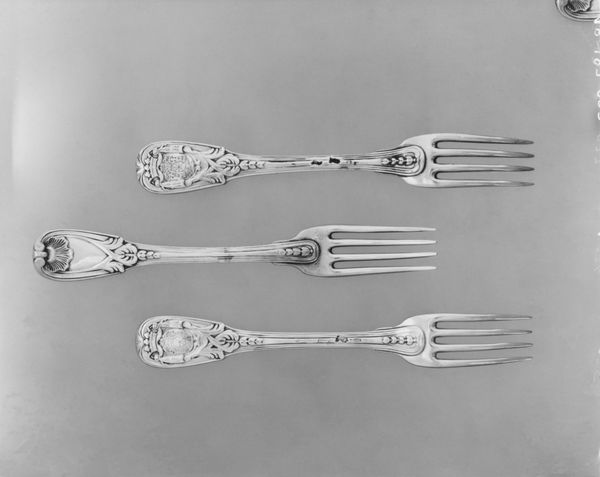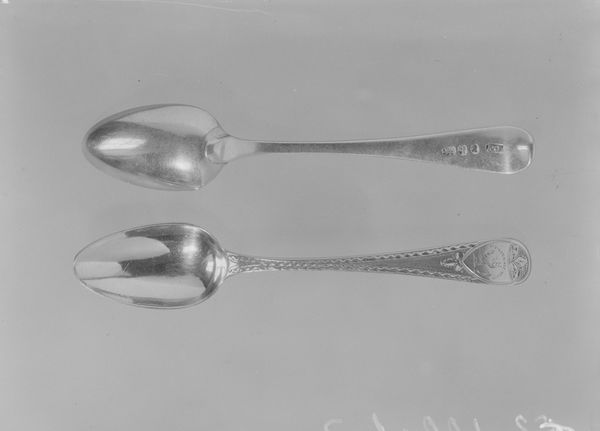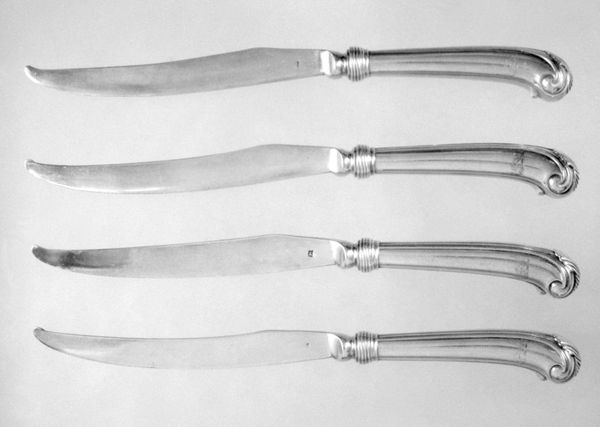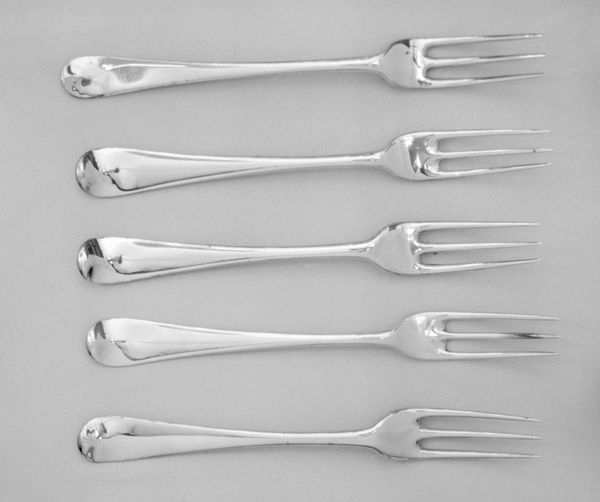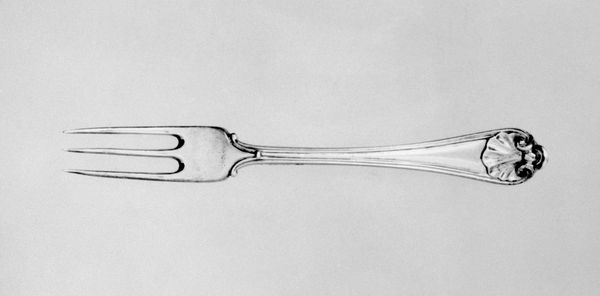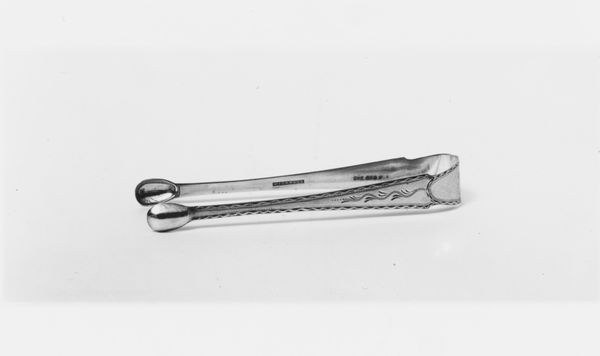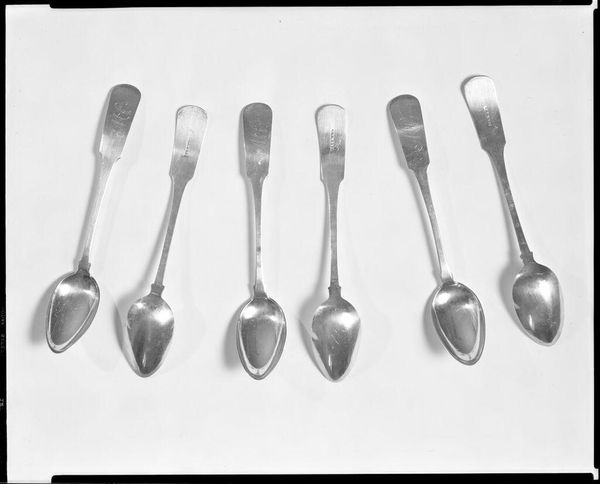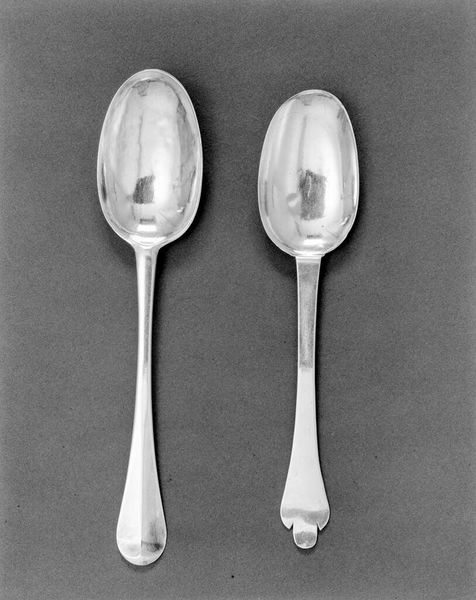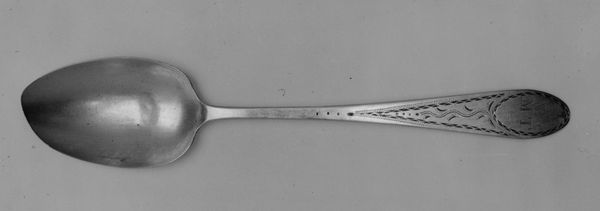
Fork with knife handle (one of six) 1778 - 1779
0:00
0:00
silver, metal, metalwork-silver, sculpture
#
silver
#
metal
#
metalwork-silver
#
sculpture
#
decorative-art
Dimensions: Length: 5 5/8 in. (14.3 cm)
Copyright: Public Domain
Editor: So, this artwork is titled "Fork with knife handle" – quite literal, wouldn't you say? It's one of six made by Louis-Antoine Taillepied around 1778 or 1779. They’re crafted from silver and it's here at the Met. I'm struck by how these blur the line between functional object and miniature sculpture. What do you see in this piece that stands out to you? Curator: What immediately grabs my attention is the conscious melding of two distinct tools into one. It provokes questions about labour and access: Who would have commissioned such a piece? What does it say about the relationship between the utility of eating and a display of wealth, communicated through material like silver and crafted through highly skilled metalworking? Consider how silver, as a material, reflects the light in the room, elevating its presence, literally. Do you think this reflects shifting social rituals? Editor: That’s fascinating, thinking about it as a reflection of social status. I hadn't considered how the material itself communicates that. It's also interesting how a simple tool becomes so ornate. Curator: Exactly. Think about the societal conditions under which these utensils are being created and consumed. We see an era increasingly preoccupied with displays of opulence. Consider, too, the environmental costs associated with procuring, processing, and shaping the material—it all contributes meaning. How does its current display within the museum alter our relationship with these pieces, versus how it would have been perceived in its original setting? Editor: It's interesting to think about that contrast, where these pieces go from being tools of consumption, objects of wealth displayed on tables, to now being relics or treasures in a museum. It totally reframes our perception of them. Curator: Indeed. And that shift highlights the life cycle of objects, and the ever-evolving dialogue between maker, user, and observer. I learned from you just now, that by having me examine it within this museum, the piece becomes more important as it separates itself from practical applications and turns more into art, or historical relic.
Comments
No comments
Be the first to comment and join the conversation on the ultimate creative platform.
